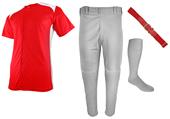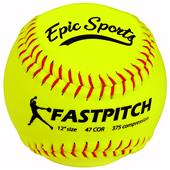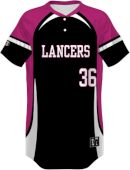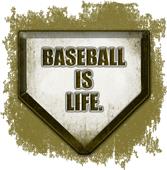Shopping for, and setting up a complete home basketball system can seem like a foreboding experience. There are so many types of goals to choose from. So many different kinds of basketball backboard systems, basketball posts, goals, new innovations, and prices ranges. When it comes to putting together a complete court, there are about as many possibilities as there are players. Even if you know next to nothing about the sport, with a little foreknowledge and preparation, you'll be able to more clearly target the exact package that fits your family and finances. The following answers to more commonly asked questions about buying a home basketball system are designed to help you meet your goals.
- What kinds of home basketball systems are there?
- What comes with a complete home basketball system?
- What are some major differences between home basketball systems?
- How do I know which system is right for me?
- What should I know about setting up an outdoor basketball system?
- Can I install my basketball system myself?
- Where should I install my in-ground system, and what kinds of tools will I need?
- How do I install my in-ground system?
- What kind of pole should I buy?
- What are the different kinds of backboards?
- What is the best kind of backboard for home use?
- What kind of rim should I buy?
- What are the best basketball systems for kids?
- How high should I set my child's basketball system?
- Should I buy a portable or a permanent basketball system?
- What should I look for in a good portable basketball system?
- How much can I expect to pay for my home basketball system?
- How long can I expect my outdoor basketball system to hold up?
- I'm moving, can I dismantle my in-ground basketball system?
- What are the dimensions of a regulation basketball system?
What kinds of home basketball systems are there?
We're all familiar with the basketball goals we commonly see in a gymnasium. When it comes to purchasing a home system, there are basically three kinds to choose from: portable, wall-mount, and permanent in-ground. There are two types of in-ground systems: fixed-height and adjustable.
What comes with a complete home basketball system?
It depends on the package. Most assembly packages come with the pole and base, rim, net, backboard, and installation parts and accessories. Some basketball systems include safety padding.
What are some major differences between home basketball systems?
They'll vary from one manufacturer or model to another. Major differences may include cost, the type and quality of the backboard, the type of pole system, the rim, portability, and versatility.
How do I know which system is right for me?
When choosing a home basketball package, there are many questions you'll need to ask. First, what will you be using it for? Do you have lively group of little kids who just enjoy dunking the ball, or do you have a budding all-star at home who needs to practice his or her technique? Perhaps you want a goal that will simply provide friends and family with hours of outdoor fun. Do you have the ground space for an outdoor system? Will your homeowner's association allow you to install a permanent system? Start with a plan. Decide whether you want to play indoors or out, or mix it up with a versatile portable. Maybe your budget will determine what's right for you. There are plenty of great affordable and high-end systems to choose from.
What should I know about setting up an outdoor basketball system?
Installing a permanent outdoor goal takes a bit of time, the right tools and materials, and careful planning to ensure that you're setting it up correctly. Make sure there are no underground cables or electrical wires where you plan to dig. If you're pouring concrete, it can take up to three days for it to dry. Read and follow the instructions that come with your system very carefully, and you should have hoops to hopefully last for generations.
Can I install my basketball system myself?
Most basketball goals can be set up using two to three people without ladders, special equipment, or expertise. It just takes a little measuring know-how, the muscle to dig, the right tools, and time. You may want to hire a professional to get it done faster and easier. If you decide to do it yourself, be aware of what's underground, making sure there are no cables, electric wires, or other obstructions.
Where should I install my in-ground system, and what kinds of tools will I need?
Near the driveway or patio provides the perfect access to a surface. When you select a location, again, take into consideration what may be underground, such as cables and wires to make sure your shovel isn't cutting into anything but dirt. Tools you'll need may include spade shovels (post hole diggers are great!), a spud bar, small rake, tape measure, wheel barrow, cement trowel, a level, and several bags of concrete mix.
How do I install my in-ground system?
Your system will come with complete instructions; be sure and read them before you do anything. The first, and one of the most important parts of creating your permanent outdoor system, will be the building of a sturdy base. This will require digging about a four-foot-deep hole in the ground about 18 inches in diameter, into which you will place your ground anchor. Fill with concrete, and allow to dry for a couple of days. While it's drying, assemble your pole, backboard, rim, and other parts. Once the cement has dried, you're ready to install your system.
What kind of pole should I buy?
The stability and strength of a basketball pole depends on its material and thickness. Generally, single, heavy-duty poles are more stable than multiple pole systems, and steel or other durable metal is going to hold up best. When choosing a metal pole steer clear of thicknesses of a higher gauge; they're most likely poles put together in sections. The lower the gauge number, the thicker and more durable the pole. Seven-gauge (3/16") is an ideal thickness, especially with rowdy kids that like to jump up and grab the rim!
What are the different kinds of backboards?
- Glass - Used for high school, college, and professional arenas because of their great ball response
- Polycarbonate - A resin material that looks like glass, but is less expensive and very impact-resistant
- Clear acrylic (or plexiglass) - Like polycarbonate it looks like glass, but is cheaper and more durable than glass. And it's more scratch-resistant than polycarbonate
- Graphite - Less expensive than other backboard materials; great for kids
- Steel - very strong and vandal-resistant
- Aluminum - Rebound effect will vary. The thicker the material, the better
- Fiberglass - A strong, lightweight composite material composed of glass fibers and different resins
What is the best kind of backboard for home use?
While glass backboard systems are the standard these days for indoor regulation basketball, acrylic backboards are recommended for outdoors for their durability and invulnerability to weather changes.
What kind of rim should I buy?
There are a few different kinds of rims in all price ranges. Choosing the right one just takes a little know-how. Like anything, there are bargain rims and quality rims. A quality one will last you longer, and save you from replacing it later. Shoot for a durable hoop made from heavy duty materials. For kids, having a spring loaded flexible goal is great for added safety.
What are the best basketball systems for kids?
The best hoops for half pints will be those that are durable and fully adjustable. Aspiring young players will want to feel like the pros; select a system that is as close to the 'real thing' as possible. A fully adjustable system will grow along with your child's vertical jump so you won't need to upgrade it later. Choose a manufacturer that keeps economy, durability, and transitioning through the growth of your child in mind. You should also consider the sturdiness of the rim, and stability of the pole and base. While the cheap plastic models will save you money, you'll benefit over time with a versatile basketball system that fully adjusts to your child's growing needs.
How high should I set my child's basketball system?
Most adjustable basketball goals can be set anywhere from 5.6 feet to 10 feet. For small kids you may want to set it low to build their confidence. Keep in mind that junior basketball leagues normally play on regulation basketball courts. For that reason, many coaches suggest that unless your child is very small, such as preschool or kindergarten age, get them used to shooting at a 10-foot-high goal! If they just enjoy dunking the ball and the goal is set so high they're not having any fun, then bring it down. The lowest setting is perfect for tiny tikes. For most organized play, eight feet works great.
Should I buy a portable or a permanent basketball system?
It depends on your needs. While portable goals are versatile and convenient, they often have large bases and can take up more space than a permanent one. On the other hand, they offer more choices. They're great for settings where there is no gymnasium because they allow kids to play indoors or out, and are easy to stow away. They're a practical choice for anywhere you don't have the ground space to set up a permanent system, or you just want more options.
What should I look for in a good portable basketball system?
Many people choose portable basketball goals for their versatility and convenience. Portable lets you play basketball anywhere, anytime. But if it isn't sturdy, and easy to move around and stow away, then you may be better off spending a little extra money on a permanent system.
If you're set on portable, choose one with a durable backboard and a sturdy pole and base. Check the details of the package; while brands may compare in price and have similar if not identical parts, one may offer a larger backboard and extra padding, while the other may not.
How much can I expect to pay for my home basketball system?
Prices vary dramatically. You can pay anywhere from a little to a lot, depending on what you're in the market for. For a good solid complete system that lasts for generations, expect to pay anywhere from several hundred to a few thousand dollars.
How long can I expect my outdoor basketball system to hold up?
The quality of the backboard, the pole, the hoop, how often it is used, and other factors will determine the life of your basketball system. Even if you have a rowdy bunch, a good sturdy high-end system could last you a lifetime.
I'm moving, can I dismantle my in-ground basketball system?
Yes, although you may need to replace some of the base components and hardware.
What are the dimensions of a regulation basketball system?
The court
A standard NBA/NCAA basketball court is 94' by 50'. Courts under FIBA regulations are slightly smaller. A high school court measures 84' by 50', an elementary school court is about 74' by 42'.
The backboard
The average rectangular or fan-shaped regulation backboard measures 72 inches across, 42 inches high, and extends 15 inches from the backboard to the center of the hoop. (Backboards for in-ground systems can measure anywhere from 44 inches to 72 inches across.)
The hoop
The standard hoop or rim is 18 inches in diameter, and extends 10 feet off the ground.
The base and pole
These dimensions will vary from one system to another.


















